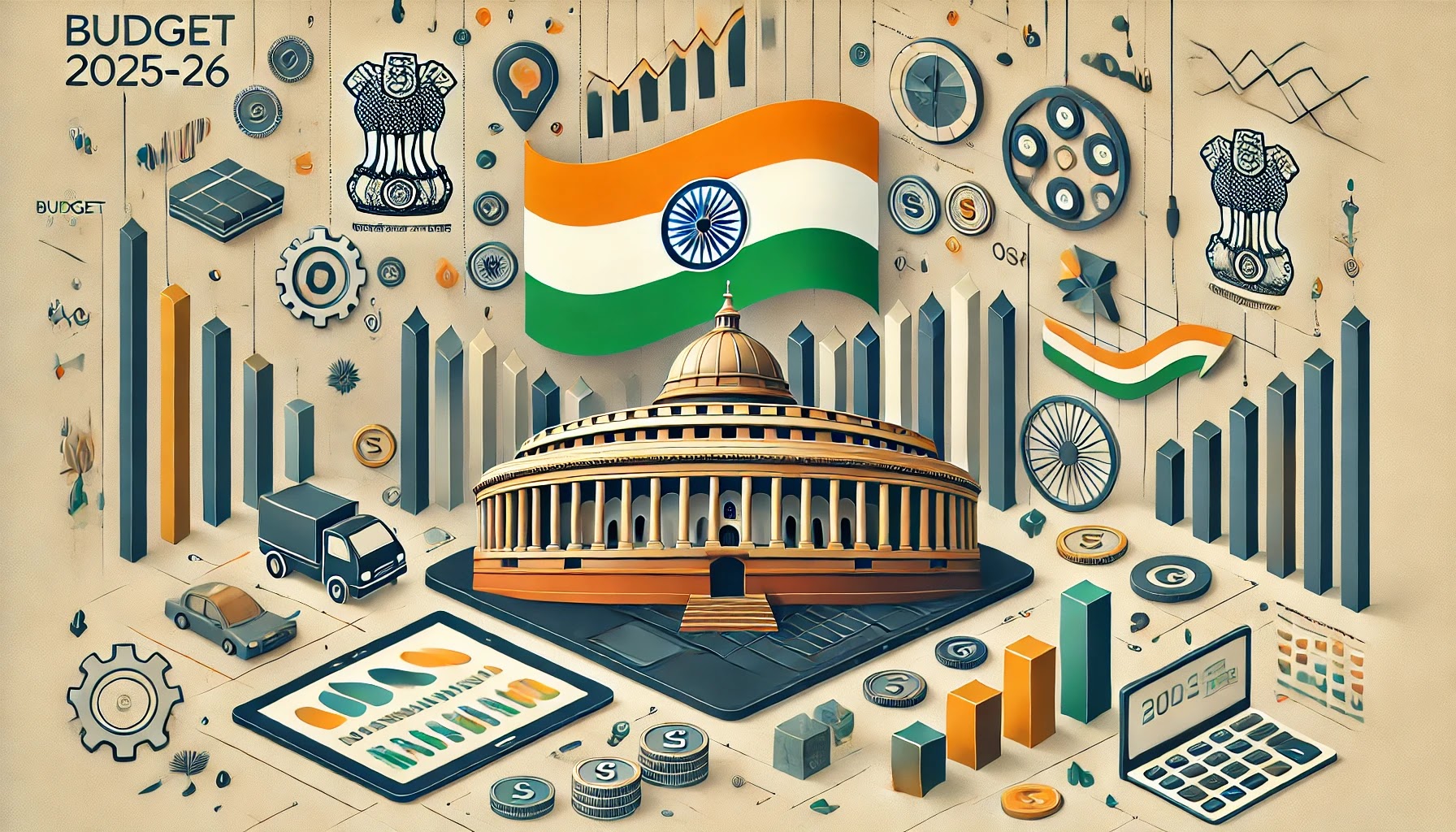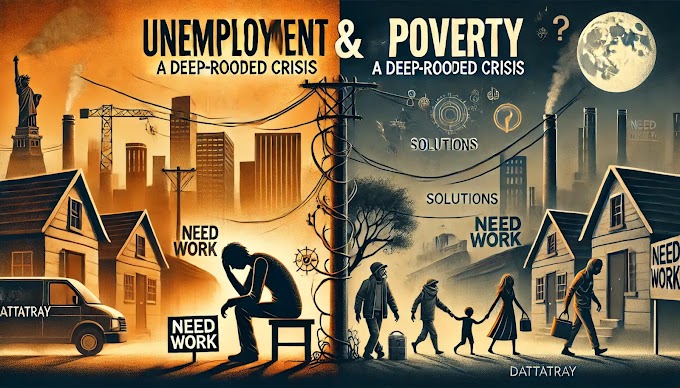The Role of Central Banks in Economic Stability: A Detailed Look at the Reserve Bank of India (RBI)
Central banks are pivotal institutions in any nation's financial and economic framework. As guardians of monetary policy, they maintain economic stability by controlling inflation, managing interest rates, and ensuring the smooth functioning of financial systems. In India, the Reserve Bank of India (RBI) serves as the central bank and is at the heart of the country's economic stability.
This blog explores the history, importance, governance, and multifaceted role of the Reserve Bank of India (RBI) in maintaining economic stability in India, while also understanding the broader context of central banks globally.
What is a Central Bank?
A central bank is an independent institution responsible for managing a nation's monetary policy, issuing currency, regulating commercial banks, and ensuring the stability of the financial system. Globally recognized central banks include:
- Federal Reserve (USA)
- European Central Bank (EU)
- Bank of England (UK)
- Bank of Japan (Japan)
Central banks act as the “lender of last resort” and oversee economic policy to promote growth while maintaining macroeconomic stability.
History of the Reserve Bank of India (RBI)
The Reserve Bank of India was established on April 1, 1935, under the provisions of the Reserve Bank of India Act, 1934. Initially, it was privately owned, but after India's independence in 1947, it was nationalized in 1949, making it wholly owned by the Government of India.
Key Historical Milestones:
- Establishment: The RBI was set up based on the recommendations of the Hilton Young Commission (1926) to address the challenges of currency stability and financial regulation during British rule.
- Nationalization (1949): The RBI became a public institution post-independence, aligning its goals with national economic development.
- Banking Regulation Act (1949): Gave the RBI the authority to regulate banking institutions in India.
- Liberalization Era (1991): The RBI played a key role during India’s economic liberalization, ensuring financial reforms to stabilize the economy.
Structure and Governance of RBI
RBI’s Headquarters and Offices:
- Headquarters: Mumbai, Maharashtra.
- Initially, the headquarters was in Kolkata but was moved to Mumbai in 1937.
- The RBI has regional offices across India in cities like Delhi, Chennai, and Kolkata.
Governance Structure:
The Reserve Bank of India is governed by a central board of directors. This board comprises:
- Governor: The chief executive of the RBI.
- Deputy Governors: Usually four, assisting the Governor in various responsibilities.
- Directors: Representing different sectors, including government and commercial interests.
Notable Governors of RBI:
- Dr. B.R. Ambedkar (served as an economist and inspired the foundation of monetary policy).
- C.D. Deshmukh (first Indian Governor).
- Raghuram Rajan (famous for his reforms and global recognition).
- Shaktikanta Das (Since December 2018 to Dec 2024).
- Sanjay Malhotra (Current Governor since December 2024 to Further terms)
Core Functions of RBI in Ensuring Economic Stability
The Reserve Bank of India has diverse responsibilities, ensuring the stability and growth of India’s economy. Here are its major roles:
1. Formulating Monetary Policy
The RBI formulates and implements monetary policy to achieve key objectives:
- Control Inflation: Maintaining price stability is a primary focus, as inflation erodes purchasing power.
- Ensure Economic Growth: By managing interest rates and liquidity, the RBI fosters a conducive environment for growth.
- Control Money Supply: Through tools like the repo rate, reverse repo rate, and CRR (Cash Reserve Ratio), it regulates the flow of money.
2. Issuance of Currency
- The RBI has the sole authority to issue currency notes in India (except for the ₹1 note, issued by the Ministry of Finance).
- It ensures the supply of currency meets the economy’s demand while safeguarding against counterfeit money.
3. Regulating and Supervising Banks
- RBI oversees the functioning of commercial and cooperative banks in India.
- It ensures financial stability by monitoring solvency and enforcing banking regulations.
4. Foreign Exchange Management
- Under the Foreign Exchange Management Act (FEMA), 1999, the RBI manages foreign exchange reserves and ensures the stability of the rupee in the global market.
- It intervenes in the foreign exchange market to curb volatility and protect India’s trade and capital flows.
5. Government’s Banker
- The RBI acts as the banker to the central and state governments.
- It manages the government’s borrowing requirements, issues government securities, and facilitates payments and collections on behalf of the government.
6. Developmental Role
- RBI promotes financial inclusion through initiatives like Jan Dhan Yojana.
- It supports agricultural credit, small-scale industries, and rural development.
7. Lender of Last Resort
- In times of financial distress or liquidity crises, the RBI steps in as the lender of last resort to ensure the stability of the banking system.
8. Promoting Financial Literacy
- The RBI undertakes efforts to educate the public about financial products, services, and rights to ensure informed decision-making.
RBI’s Role in Contemporary Economic Stability
1. Managing Inflation
- RBI targets inflation at around 4% (+/-2%) as part of its monetary policy framework.
- In periods of high inflation, it raises the repo rate to control money supply and reduce consumer spending.
2. COVID-19 Pandemic Response
During the COVID-19 pandemic, the RBI introduced several measures to stabilize the economy:
- Reduced repo rates to increase liquidity.
- Announced moratoriums on loan repayments for individuals and businesses.
- Launched liquidity-enhancing schemes to support struggling sectors.
3. Supporting Digital Banking
RBI has played a key role in promoting digital payments and banking through initiatives like:
- Unified Payments Interface (UPI).
- Real-Time Gross Settlement (RTGS) and NEFT systems for instant payments.
- Encouraging fintech innovations.
4. Addressing Global Challenges
- In a globalized world, the RBI monitors international economic trends, such as oil price fluctuations or currency volatility, to safeguard India’s economic stability.
Importance of RBI in India’s Economic Development
- Anchor of Economic Stability: By controlling inflation and maintaining currency stability, the RBI ensures a balanced economic environment.
- Driver of Development: Through targeted credit policies, the RBI supports priority sectors like agriculture, MSMEs, and rural development.
- Financial Inclusion: Programs driven by the RBI promote access to banking and financial services for marginalized communities.
- Crisis Management: The RBI’s proactive policies help India withstand global financial crises and economic shocks.
Challenges Faced by the RBI
While the RBI plays a crucial role, it faces significant challenges:
- Balancing Growth and Inflation: Maintaining low inflation while promoting economic growth is a delicate task.
- Non-Performing Assets (NPAs): The rising NPAs in banks require strict oversight and resolution frameworks.
- Currency Management: Counterfeit currency and maintaining the integrity of the rupee are ongoing concerns.
- Digital Economy Transition: As India moves towards a digital economy, the RBI faces challenges in regulating fintech and digital currencies like cryptocurrencies.
Conclusion
The Reserve Bank of India is a cornerstone of India’s financial and economic stability. From regulating monetary policy to ensuring the smooth functioning of the banking sector, its role is indispensable. Over the years, the RBI has adapted to meet the evolving needs of the economy, tackling challenges like inflation, financial crises, and digital transformation with a dynamic and proactive approach.
As the world faces unprecedented economic uncertainties, the RBI's role remains more critical than ever. By ensuring stability, promoting growth, and fostering financial inclusion, the RBI continues to serve as the backbone of India's economy, guiding it toward a more resilient and prosperous future.
.png)







.png)
.png)


.png)
0 Comments